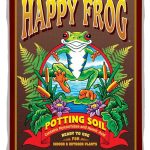As you walk through your lawn, the crunch of dry, compacted soil beneath your feet echoes the disappointment you feel gazing out at the lackluster grass. But imagine instead, a lush, vibrant landscape that beckons you to linger. The right lawn aerator can make that vision a reality, and with so many options on the market, finding the perfect one for your unique needs can be overwhelming. You’re about to discover the top-rated lawn aerators of 2025, each carefully selected to help you achieve the healthy, thriving lawn you’ve always wanted – but which one will be the game-changer for your outdoor space?
Contents
- Agri-Fab 45-0518 40 Tow Plug Aerator,black
- Yard Butler Manual Lawn Coring Aerator
- Gardzen Hand Hollow Tine Lawn Aerator
- Lawn Aerator Shoes for Grass
- Walensee Lawn Aerator Spike
- Brinly Spike Aerator with Transport Wheels
- 18-Inch Push Spike Aerator for Lawn Aeration
- Factors to Consider When Choosing Lawn Aerators
- Frequently Asked Questions
- Conclusion
Agri-Fab 45-0518 40 Tow Plug Aerator,black
If you’re a homeowner with a large lawn and compacted soil, the Agri-Fab 45-0518 40 Tow Plug Aerator is the best choice for you, thanks to its 40-inch wide working width and 24 galvanized and sharpened plug coring knives that can tackle tough soil conditions.
You’ll appreciate how it removes soil plugs, allowing air, water, and nutrients to reach your grass roots, promoting healthy growth.
With its 10 x 3 pneumatic tires, you can transport it smoothly around your lawn.
After use, you can easily store it away, thanks to its single-lever transport handle that folds up.
As a bonus, it comes with a 3-year limited warranty, giving you peace of mind.
Best For: Homeowners with large lawns and compacted soil.
Pros:
- Removes soil plugs, allowing air, water, and nutrients to reach grass roots, promoting healthy growth.
- 40-inch wide working width and 24 galvanized and sharpened plug coring knives can tackle tough soil conditions.
- Smooth transportation and storage with 10 x 3 pneumatic tires and single-lever transport handle that folds up.
Cons:
- Assembly can be lengthy (2-3 hours) and requires patience.
- Instructions can be confusing, with some steps unclear.
- Some users experienced issues with bolt lengths and wheel assembly.
Yard Butler Manual Lawn Coring Aerator
With its durable steel construction and cushioned handles, the Yard Butler Manual Lawn Coring Aerator is the best choice for homeowners seeking a reliable and comfortable tool to promote vigorous root growth and reduce water runoff in their lawns.
You’ll appreciate the 37-inch aerator’s foot bar, which provides extra leverage, making it easy to use without straining your back.
As you use the Yard Butler, you’ll remove 3-1/2 inch cores, reducing compaction and promoting healthy root growth. This tool is perfect for revitalizing old lawns and allowing air, water, and fertilizer to reach deep into grass roots, resulting in a stronger and healthier lawn.
With over 8,600 customer reviews and a 4.3-star rating, you can trust that this aerator will deliver the results you need.
Best For: Homeowners with small to medium-sized lawns who want a manual and cost-effective way to promote healthy root growth and reduce water runoff.
Pros:
- Durable steel construction with a powder-coated finish for rust resistance
- Cushioned handles and a foot bar provide comfort and extra leverage, making it easy to use without straining your back
- Effective in revitalizing old lawns, reducing compaction, and promoting healthy root growth
Cons:
- Physically demanding to use, especially for those with physical limitations
- May clog if used on dry, hard soil
- Requires some effort to use, which may be a drawback for some users
Gardzen Hand Hollow Tine Lawn Aerator
Compact soil and lawn owners will find the Gardzen Hand Hollow Tine Lawn Aerator to be an ideal choice, as its hollow tines effectively remove plugs of soil, leaving small gaps for improved airflow and drainage.
You’ll appreciate its sturdy construction, featuring a high-quality steel frame with a black powder-coated finish.
This hand aerator is perfect for small lawns or problem areas in larger lawns, and its simplicity makes it a cost-effective solution.
With an overall rating of 4.1 out of 5 stars from over 1,000 customers, you can trust that it’s easy to use and gets the job done.
Just remember to use it on wet soil, avoid rocky areas, and clean it regularly to prevent clogging.
Best For: Compact soil and lawn owners, especially those with small lawns or problem areas in larger lawns.
Pros:
- Effective in removing plugs of soil and improving airflow and drainage
- Sturdy construction with high-quality steel frame and black powder-coated finish
- Easy to use and cost-effective solution for lawn aeration
Cons:
- May experience clogging issues if not cleaned regularly
- Not suitable for use on rocky areas to prevent clogging
- Requires wet soil for easier aeration
Lawn Aerator Shoes for Grass
You’ll find the Lawn Aerator Shoes for Grass ideal for individuals with smaller lawns, as they provide an efficient and effortless way to aerate your patio garden without needing heavy machinery.
These shoes are designed to make lawn aeration a breeze, with adjustable size fitting women’s shoe size 6-10 and men’s shoe size 6-9.
The aluminum alloy and plastic soles guarantee durability and comfort, while the heavy-duty spikes with 675Mpa yield strength make aeration a walk in the park.
With 4.3 out of 5 stars and over 1,400 ratings, it’s clear that customers love these shoes.
To get the most out of them, wear them over tennis shoes, use them after rain for smooth spike movement, and develop a walking style to aerate efficiently.
Best For: Individuals with smaller lawns who want an efficient and effortless way to aerate their patio garden.
Pros:
- Adjustable size fits a range of shoe sizes, making it accessible to many users
- Heavy-duty spikes with high yield strength make aeration easy and efficient
- Durable and comfortable design with aluminum alloy and plastic soles
Cons:
- May not be suitable for larger lawns, requiring more extensive aeration
- Requires a specific walking style to aerate efficiently, which may take some practice
- Users need to exercise caution when stepping off grass to avoid falling
Walensee Lawn Aerator Spike
If you’re looking for a reliable and efficient lawn aerator that can tackle various soil types, the Walensee Lawn Aerator Spike is an excellent choice, boasting 15 sharp iron spikes that penetrate 2.3 inches deep for effective aeration.
This durable iron construction with a powder-coated finish guarantees rust-resistance, making it a great investment for your lawn’s health.
You’ll appreciate the cushion-designed T-handle and foot bar, which provide comfortable use and minimal effort required.
Plus, the compact design makes it easy to carry and store when not in use.
With an impressive 4.3-star rating from over 1,100 customers, it’s clear that this product delivers on its promises, promoting healthy lawn growth and reviving lawn health with ease.
Best For: Homeowners with small to medium-sized lawns looking for an easy-to-use and effective lawn aerator.
Pros:
- Effective aeration with 15 sharp iron spikes that penetrate 2.3 inches deep
- Durable iron construction with powder-coated finish for rust-resistance
- Compact design for easy carrying and storage
Cons:
- May not be suitable for larger areas or hard soil
- Requires pre-watering of the lawn for best results in hard and dry soil
- Some users may find it heavy or difficult to use for extended periods
Brinly Spike Aerator with Transport Wheels
With its ability to penetrate soil up to 2 inches deep and its extra-wide tow bar, this Brinly Spike Aerator with Transport Wheels is the best choice for homeowners with large lawns who need to relieve compacted soil and promote healthy grass growth.
You’ll appreciate the 11 tine stars featuring 12 spike tips that make quick work of breaking up compacted soil.
The transport mode with single lever engagement makes it easy to cross driveways and sidewalks, and the weight tray can hold up to 150 pounds of extra weight for maximum soil penetration.
With its durable galvanized steel 3D tines and nylon spacers, this aerator is built to last.
Plus, the transport wheels make it easy to move around your lawn.
Best For: Homeowners with large lawns who need to relieve compacted soil and promote healthy grass growth.
Pros:
- Easy to assemble and use
- Durable galvanized steel 3D tines and nylon spacers for long-lasting performance
- Transport wheels make it easy to move around the lawn and cross driveways and sidewalks
Cons:
- Some customers have issues with the design of the holes for straps and the bolts holding the tow bar
- No specific warranty information is provided
- Some customers may find the product heavy or difficult to maneuver
18-Inch Push Spike Aerator for Lawn Aeration
For those seeking a reliable and efficient lawn aerator, the 18-Inch Push Spike Aerator from Suchtale is an excellent choice, boasting a sturdy alloy steel construction and 5-star shaped spikes for maximum soil penetration.
You’ll appreciate the solid and flexible plastic rollers that make it easy to roll on all kinds of turf.
The weight tray is designed with high-quality all-steel for added soil penetration, and the durable construction with a powder-coat finish helps to prevent rust and promotes a long lifespan.
With an easy assembly process and a 100% satisfaction guarantee, you can trust this product to get the job done.
Just be prepared to put in some effort, especially for larger lawns, and consider using weights to increase soil penetration.
Best For: Those who want a reliable and efficient lawn aerator for their small to medium-sized lawns.
Pros:
- Easy to assemble with detailed instructions
- Sturdy alloy steel construction with 5-star shaped spikes for maximum soil penetration
- Durable construction with powder-coat finish for long life and rust prevention
Cons:
- Requires some effort to use, especially for larger lawns
- May be difficult to use for those with health issues
- May require additional weights to increase soil penetration
Factors to Consider When Choosing Lawn Aerators
When shopping for a lawn aerator, you’ll want to guarantee several key factors to confirm you find the right one for your needs.
You’ll need to ponder the size and type of your lawn, as well as the weight and material of the aerator itself.
From there, you can start evaluating tine length and spacing, ease of assembly and use, and any additional features that might make a big difference in your lawn care routine.
Lawn Size and Type
Your lawn’s unique characteristics, including its size and type, play a crucial role in selecting the right aerator for the job.
For instance, if you have a larger lawn, you may need to opt for a tow-behind or ride-on aerator to cover more ground efficiently.
On the other hand, smaller lawns can be adequately aerated with manual or push aerators.
The type of grass you have also matters.
Cool-season grasses, warm-season grasses, and lawns with clay or sandy soil require specific aeration techniques and frequencies to achieve maximum results.
If you have a lawn with heavy thatch or compacted soil, you’ll need a core aerator or spike aerator to penetrate deep into the soil and break up compacted areas.
Additionally, lawns with dense shade or heavy tree coverage may require more frequent aeration to improve air, water, and nutrient circulation.
Don’t forget to think about lawn obstacles, such as gardens, trees, or slopes, to guarantee safe and efficient aeration.
Aerator Weight and Material
You’ll want to weigh the weight and material of an aerator, as these factors can profoundly impact its performance and longevity.
A heavier aerator typically provides deeper soil penetration, but may be more difficult to maneuver. On the other hand, lighter models are more suitable for smaller lawns or if you have mobility issues.
The material used to construct the aerator also plays a significant role. Metal and steel models are often more durable than plastic or aluminum ones.
Look for powder-coated finishes that provide rust resistance and extend the lifespan of the aerator. The type of metal used, such as galvanized steel, can also impact the aerator’s ability to withstand corrosion and harsh environmental conditions.
When choosing an aerator, consider your lawn size and type, as well as your personal needs. A heavier, more durable aerator might be perfect for a large lawn, while a lighter, more maneuverable one might be better for smaller areas.
Tine Length and Spacing
As you consider the weight and material of your aerator, it’s equally important to think about the tine length and spacing, which directly impact the machine’s ability to penetrate the soil and provide effective aeration.
Tine length is critical, as it determines how deeply the aerator can penetrate the soil. Longer tines (up to 3-4 inches) are more effective for compacted or clay soils, while shorter tines (1-2 inches) are better suited for shallow aeration.
The ideal tine spacing depends on your lawn type and soil condition. A general rule of thumb is to have tines spaced 2-4 inches apart to facilitate adequate soil penetration and aeration.
However, if you have fine fescue, Kentucky bluegrass, or perennial ryegrass lawns, closer tine spacing (2 inches or less) is recommended. For Bermudagrass, zoysiagrass, and buffalograss lawns, wider spacing (3-4 inches) is suitable.
Ease of Assembly and Use
How much time and effort are you willing to dedicate to assembling and operating your lawn aerator? This is a vital question to ponder when choosing the right lawn aerator for your needs.
Depending on the product and brand, assembly time can range from 2-3 hours for tow-behind aerators to minimal assembly required for manual push aerators. Some lawn aerators come pre-assembled, while others require assembly, so it’s imperative to check the product description or manufacturer’s instructions before making a purchase.
When it comes to ease of use, manual aerators require physical effort, while tow-behind aerators are more suitable for larger lawns and may require additional equipment, such as a lawn tractor.
The weight and ergonomics of the aerator can substantially impact usability, with lighter models and comfortable grips making it easier to use the product for extended periods.
If you’re struggling with assembly or operation, video instructions and customer support can be valuable resources. Look for manufacturers that offer these resources to facilitate a smoother user experience.
Additional Features and Value
When evaluating lawn aerators, take into account the additional features that provide value, as they can greatly enhance your overall aeration experience.
You’ll want to think about features that promote user comfort, such as adjustable handle heights and cushioned grips, which can reduce fatigue and make the aeration process more enjoyable.
Some lawn aerators also come with convenient storage and transport options, like transport wheels or folding designs, which are perfect for those with limited storage space.
The material and construction of the aerator also play a significant role in its value.
Durable materials like steel and robust construction methods can provide longer product lifetimes and reduced maintenance needs.
Additionally, the type and quality of the spikes or tines can vary, with some aerators featuring heavy-duty spikes or 3D tines that can penetrate deeper into the soil, providing more effective aeration.
Finally, don’t forget to weigh the importance of warranties and customer support, which can provide peace of mind and protection against defects or issues with the product.
Frequently Asked Questions
Can I Use a Lawn Aerator on Newly Seeded or Sodded Lawns?
Don’t aerate your newly seeded or sodded lawn just yet! You’ll risk damaging young roots or disrupting soil structure. Wait until your lawn is established, typically 4-6 weeks, before using a lawn aerator to avoid setbacks.
Do Lawn Aerators Work on Thick or Thatchy Lawns?
“You’re probably thinking, ‘Will a lawn aerator even make a dent in my ridiculously thick, thatchy lawn?’ The answer is, yes! A good aerator can slice through even the most stubborn thatch, leaving your lawn breathing easy and looking fabulous.”
How Often Should I Aerate My Lawn in a Year?
You’ll want to aerate your lawn at least once a year, but if you’ve got heavy clay or sandy soil, you might need to do it twice, ideally during the growing season, to keep your lawn healthy and thriving.
Can I Rent a Lawn Aerator Instead of Buying One?
You can definitely rent a lawn aerator instead of buying one, which is a cost-effective option, especially if you only need to aerate your lawn occasionally; just check local equipment rental stores or online platforms for availability.
Are Manual Lawn Aerators Effective for Large Lawns?
You’re trying to tackle a sprawling lawn, like a sailor charting uncharted waters. Manual lawn aerators can be effective, but for large lawns, you’ll be pushing a heavy manual reel mower up a steep hill, making it a time-consuming, labor-intensive task.
Conclusion
You’ve got the power to transform your lawn with the right aerator!
With our top picks, you’ll be on your way to a lush, vibrant outdoor space.
Did you know that lawns with proper aeration can increase oxygen exchange by up to 50%?
By choosing the perfect aerator for your needs, you’ll be breathing new life into your lawn in no time.
Get ready to enjoy a healthier, happier outdoor space all year round!












